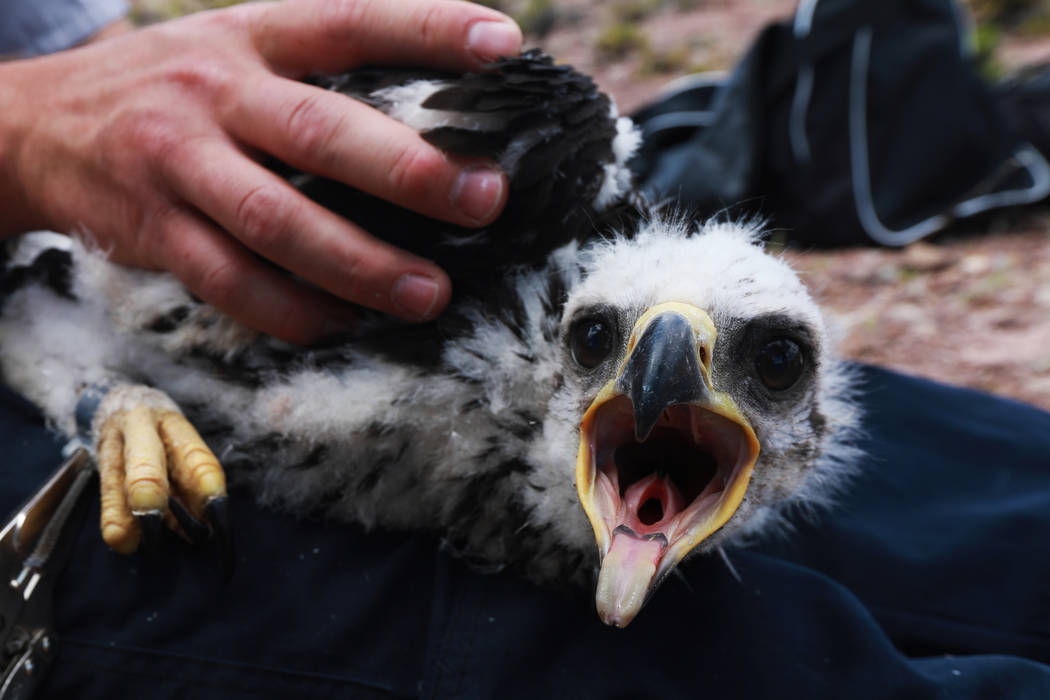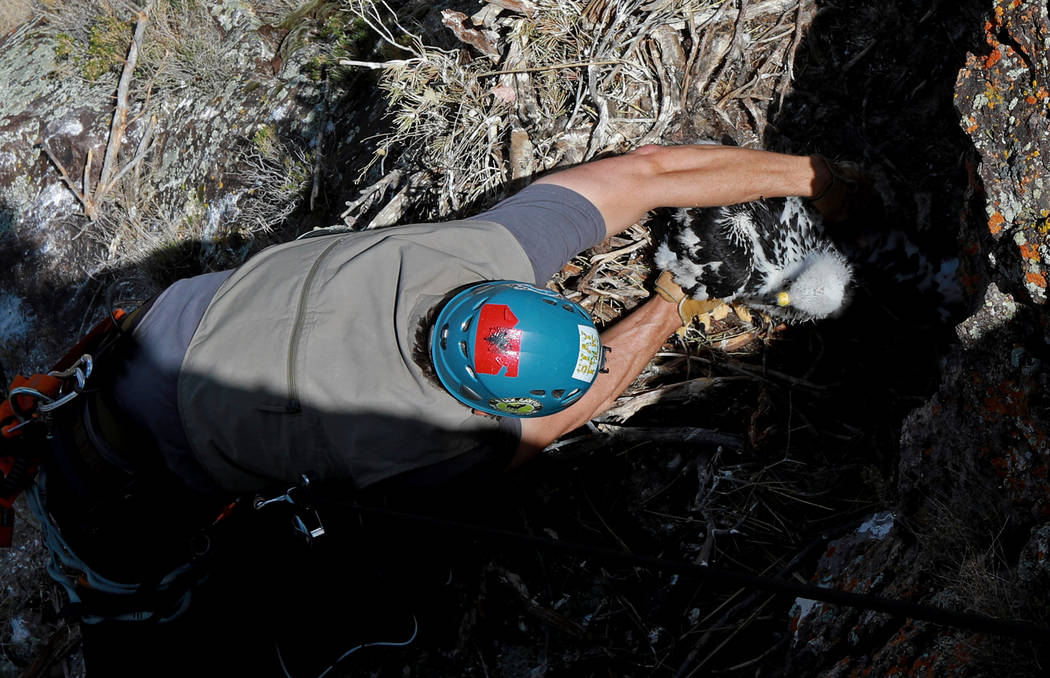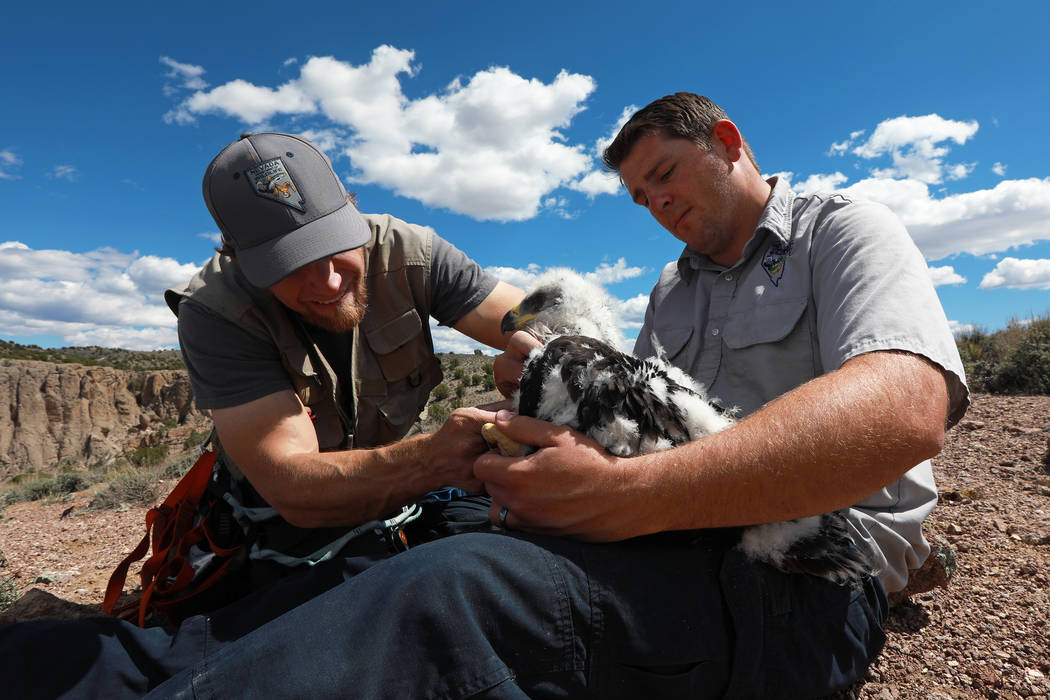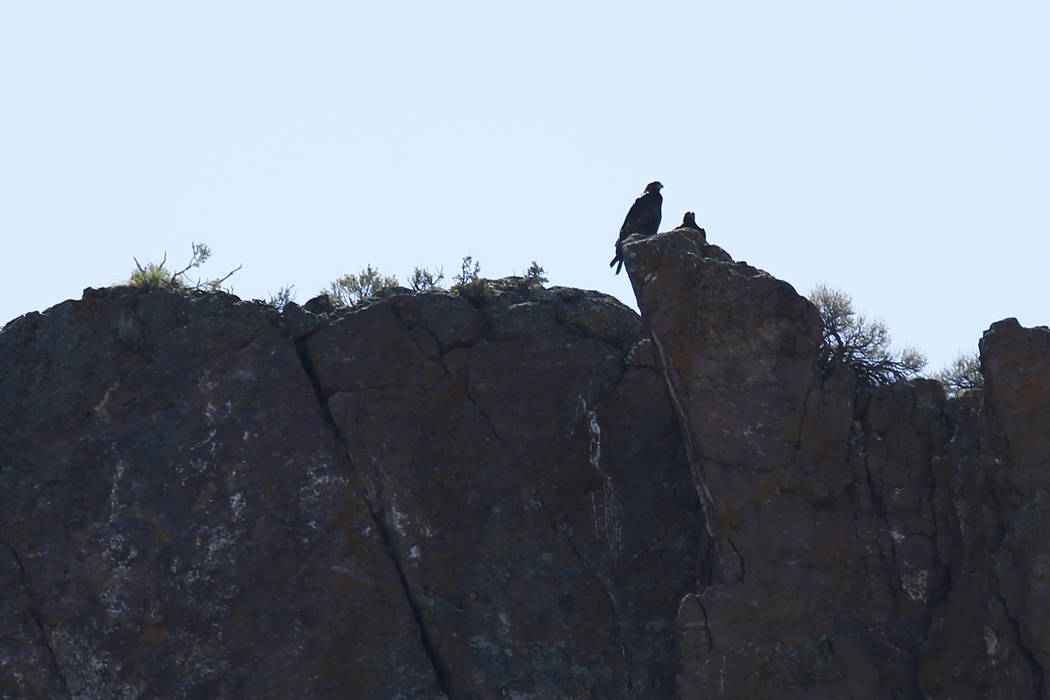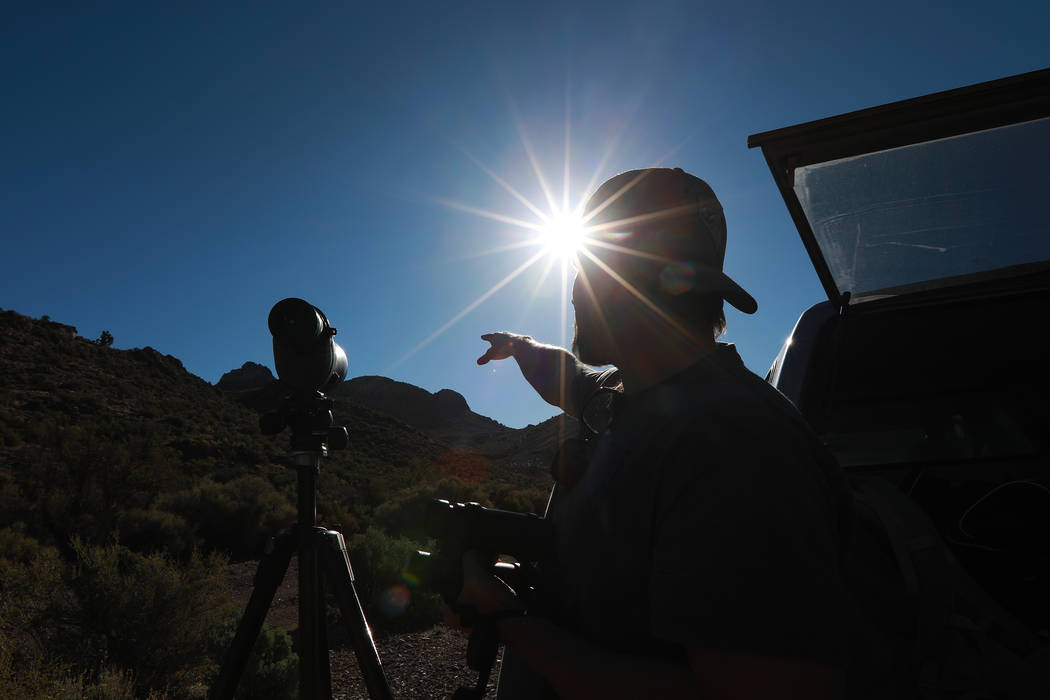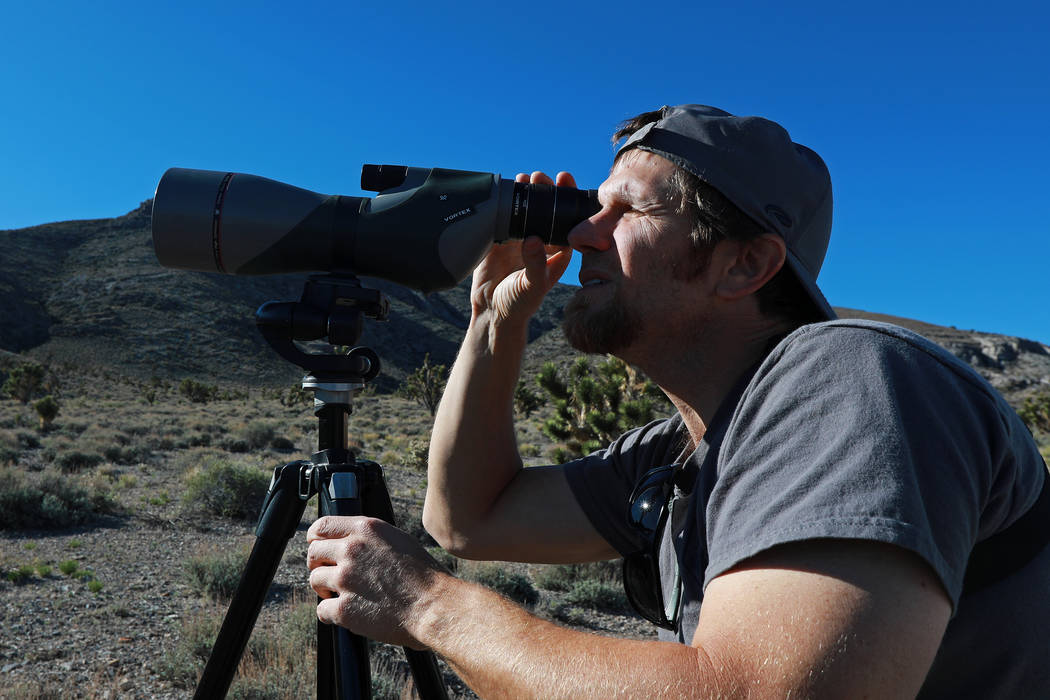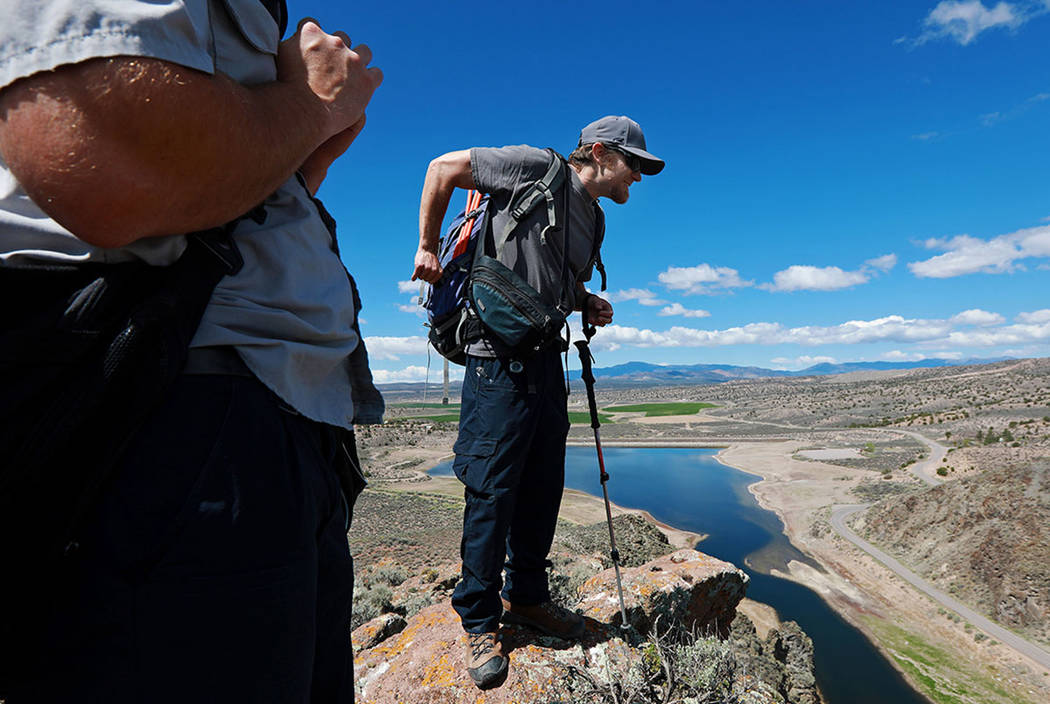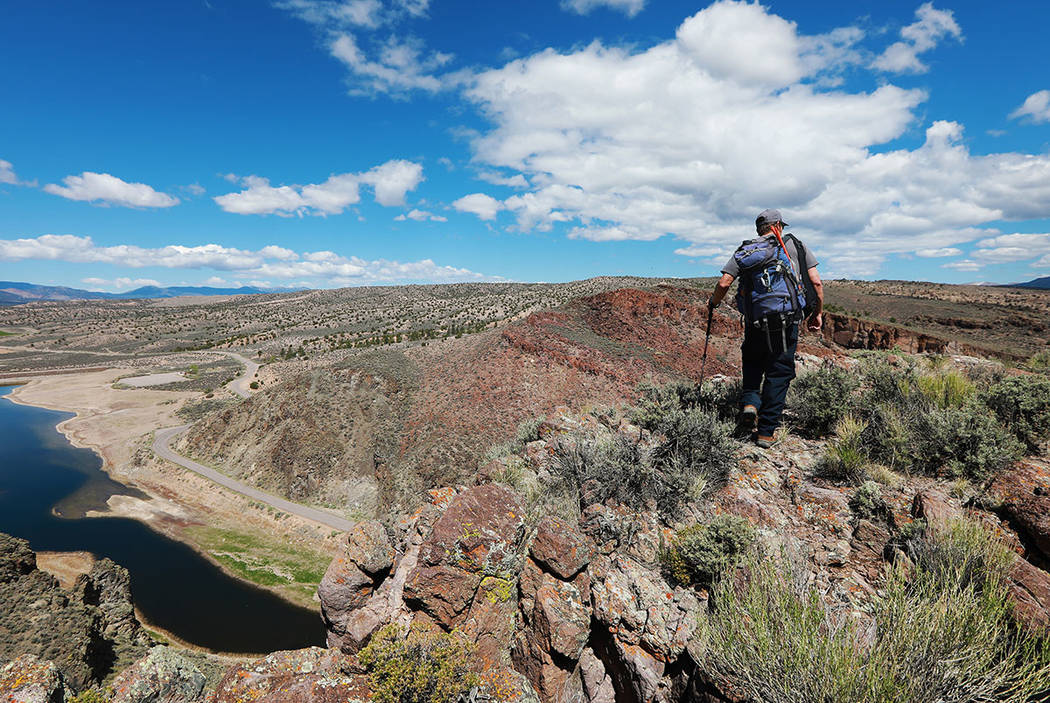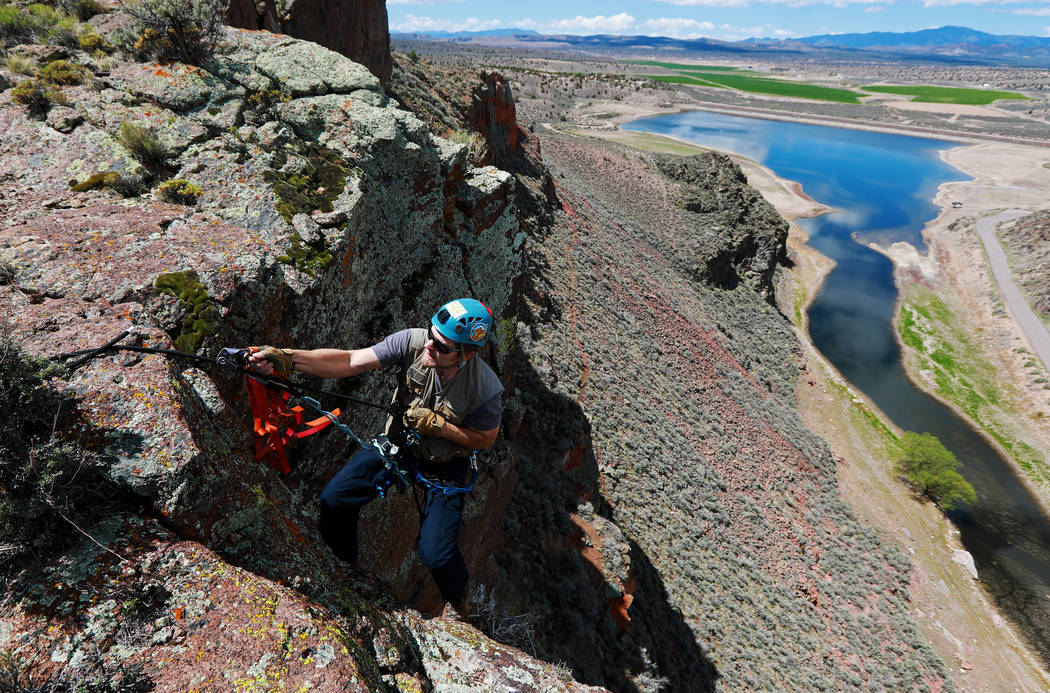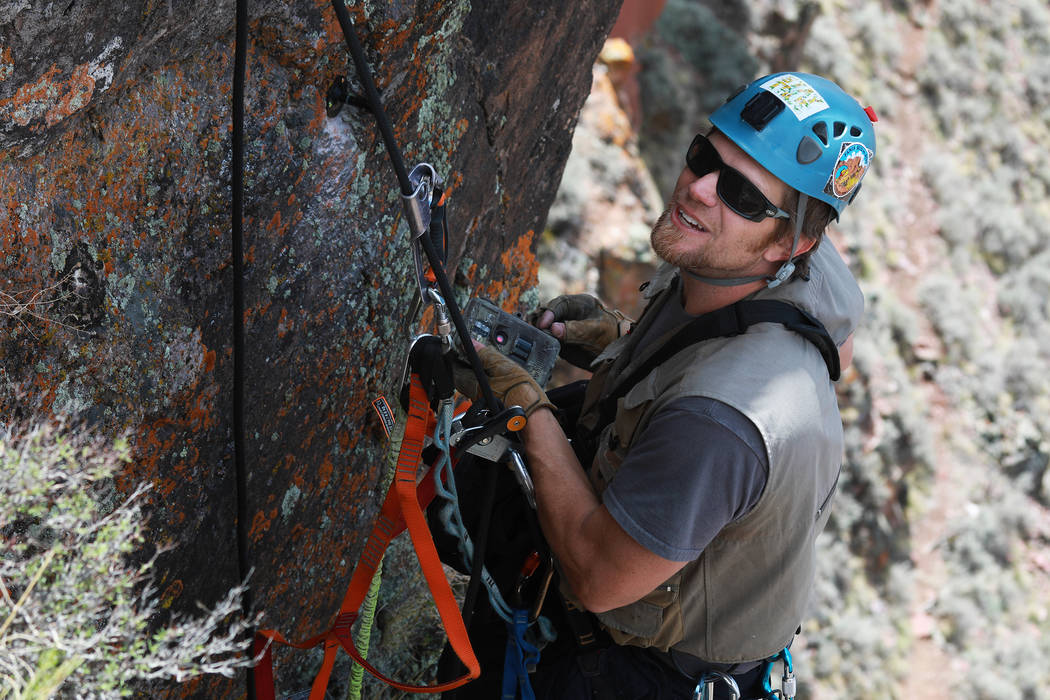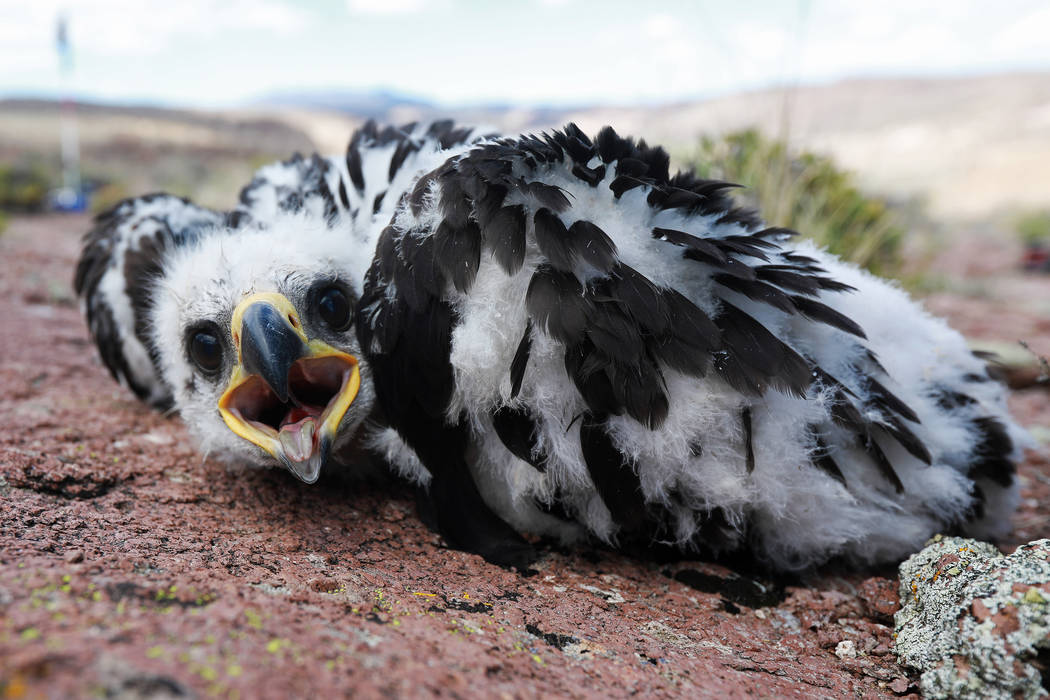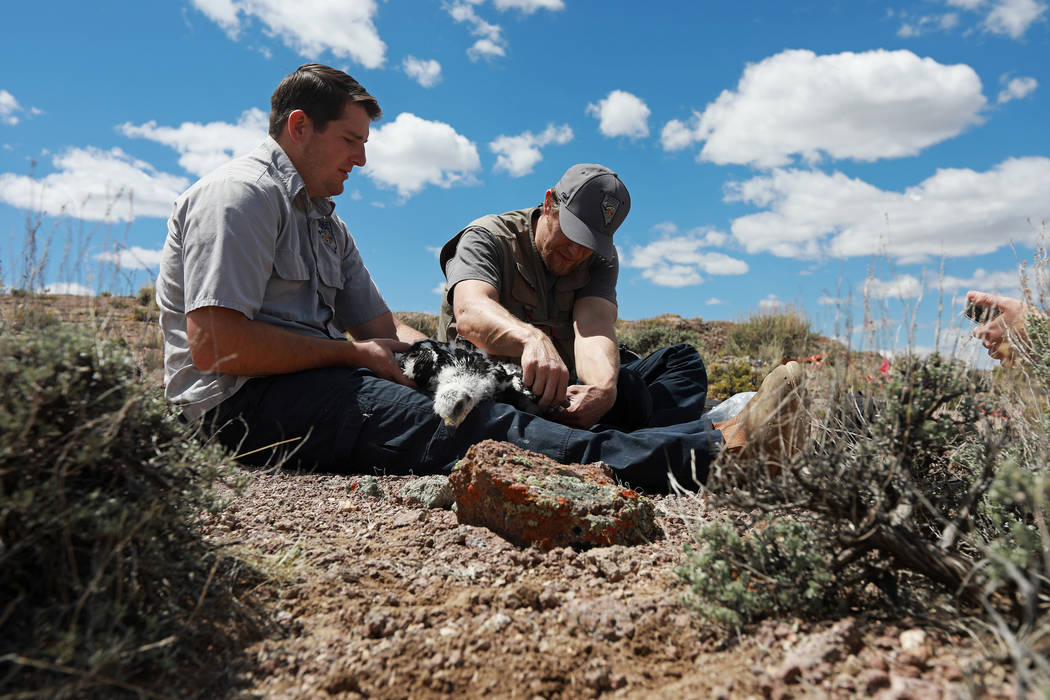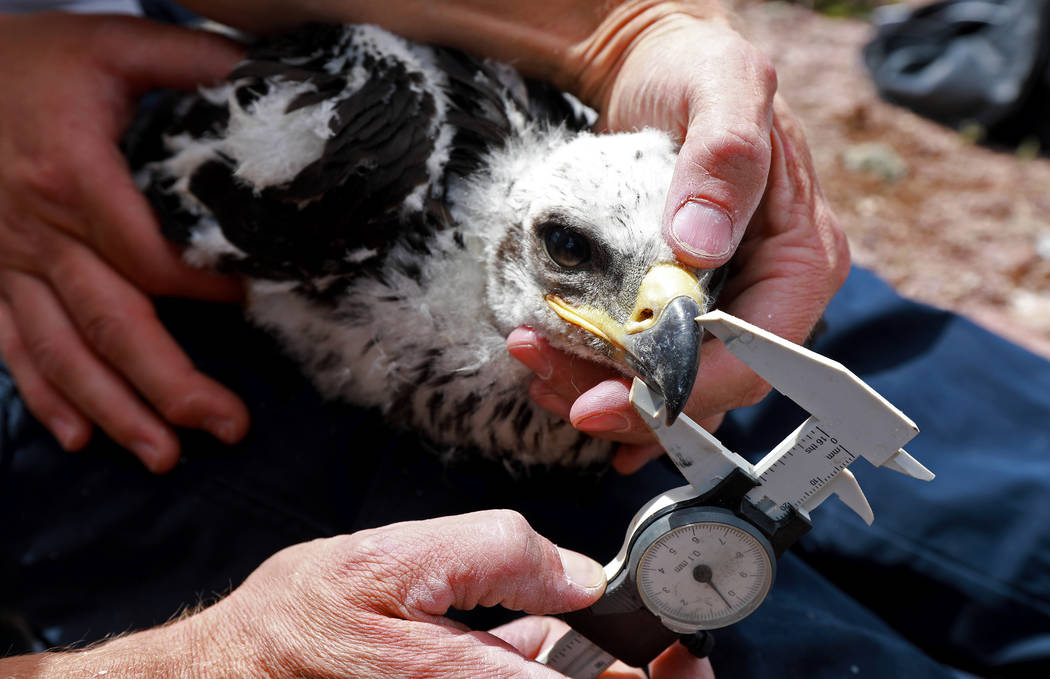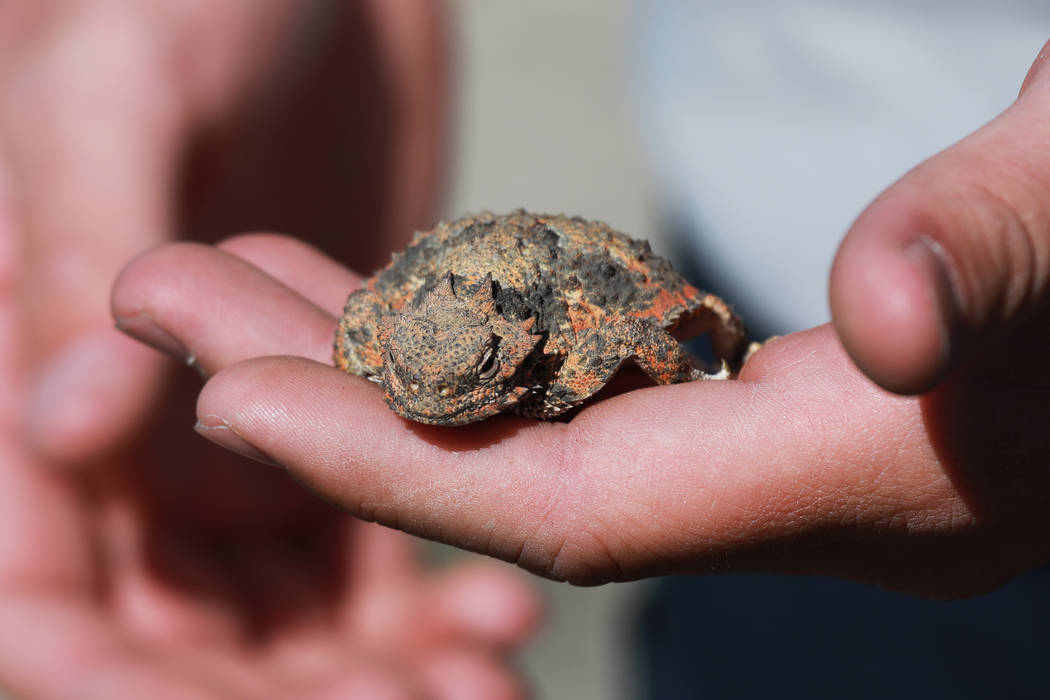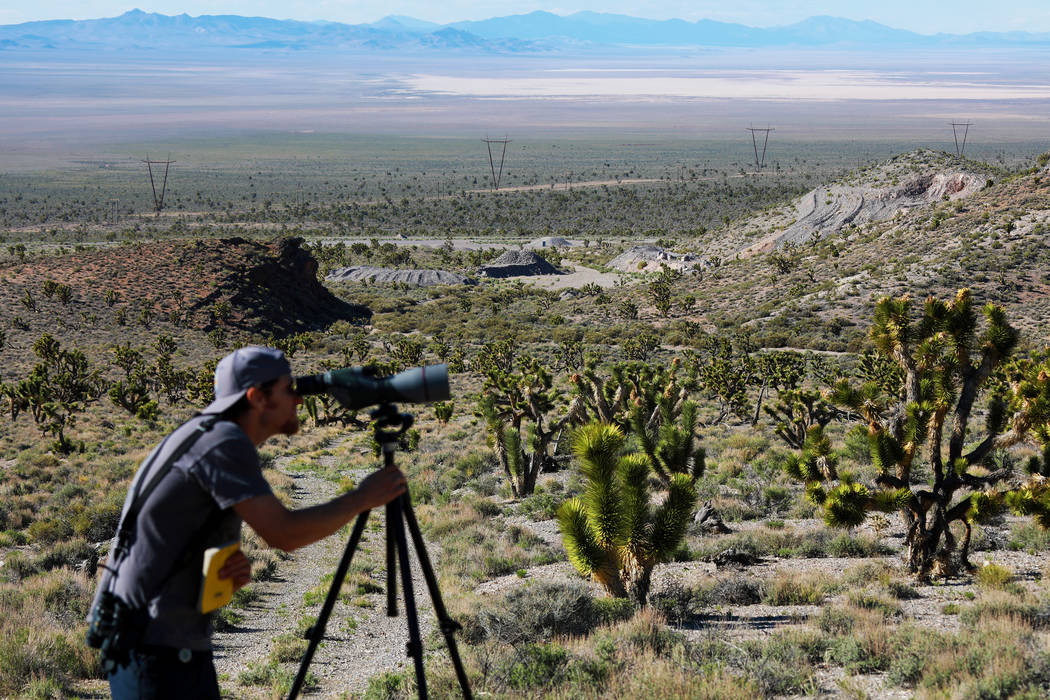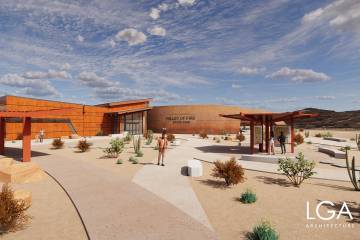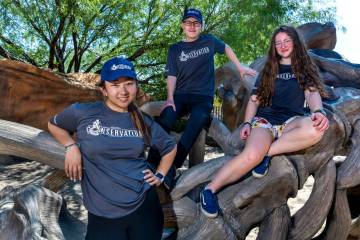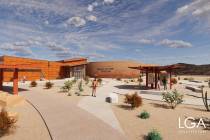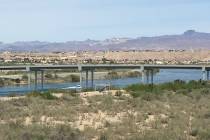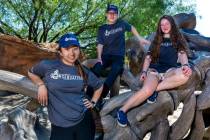Nevada wildlife biologist keeps tabs on state’s golden eagles
The wildlife biologist rappelled several feet below a cliff top to a spot where he knew he’d find nestlings.
Minutes earlier, with his binoculars, he’d seen a single white head pop up.
“That’s junior,” Joe Barnes said proudly, his brown hat from the Nevada Department of Wildlife shielding him from the sun.
Up on the cliff outside Pioche on Thursday, he reached into the nest for one of two golden eaglets.
“Relax, relax, buddy,” he said, his gloved hand holding it by its talons and wings. He carefully scooped the 5-week-old nestling into his black Adidas bag.
“There you go,” he told her, reaching for her other sibling. “You’re wet.”
It had rained heavily Tuesday and Wednesday, and weather conditions are critical factors in nestlings’ survival, a concern for the up to 12 nestlings in six territories that Barnes studies.
Before 2014, little research had been done on golden eagles in Nevada.
“Nevada is kind of a black hole,” Barnes said Thursday. “There’s not much data. This feeds into the bigger picture.”
The birds, protected by the Bald and Golden Eagle Protection Act and identified by the Nevada Wildlife Action Plan as a species of conservation priority, are thought to be declining in the western United States.
Their populations face conservation challenges, including habitat fragmentation, development, electrocution, collision with wind turbines and human disturbance.
By tracking golden eagles, researchers can determine what might have caused an eagle to die.
By collecting genetic samples from the babies, researchers can pinpoint where those eagles grew up and which population was affected by their deaths.
Across the West, 280 eagles are being tracked. Nevada is home to roughly 3,000, Barnes said.
Since 2014, Barnes has surveyed territories in southeastern Nevada, taking samplings from eaglets and attaching transmitters on seven adults and 17 nestlings. Two more will be secured this year.
Five years in a row, 100 percent of the golden eagles he tracked came back to breed. Of the 15 known occupied golden eagle territories, he has assessed breeding at eight. Six laid eggs this year.
Part of Barnes’ research on golden eagles in Nevada is a collaboration with other researchers in New Mexico, Wyoming and Idaho, who hope to answer different questions about what influences eagle populations.
On Thursday, he made contact with his first two nestlings of the year.
“It’s like peeling back layers of an onion,” Barnes said. “Today feeds into the bigger picture.”
Sampling
Barnes pulled himself up over the cliff, carrying the stowed-away nestlings over his shoulder in his black bag.
“I call it my ‘kid carrier,’” he said.
Barnes, who’s 43 and sports russet sideburns and a goatee, has studied eagles for about 15 years but first became fascinated with different species when he was a kid, growing up among apple orchards on an Ohio farm with chickens, ducks and geese.
When Barnes moved to Nevada in 2004, he took note of the stark difference between developed beauty in the Northeast and the wildness of Southern Nevada’s desert.
The golden eagles, reclusive and shy around humans, are more secretive than bald eagles, he said. They choose to live in remote, arid mountain ranges, on cliffs and in canyons.
“They really end up being kind of a symbol of the wild American West,” Barnes said. “They’re the absolute top avian predator in North America. What they need is space.”
And on Thursday, the 5-week-old eaglets found themselves in a new space, sitting silent and batting their gray eyelids.
It was time to take their samples. Females are bigger, and Barnes could tell by the width of their legs, at 12 millimeters or greater, these two were sisters.
The dark-brown-and-white-speckled nestlings will in a few weeks develop a lighter, golden-brown plumage on the back of their neck. They’ll also shed their white feathers, and their wings will reach a span of 7 feet.
Warm and fidgety
On Thursday, Brady Whipple, a wildlife management area technician, carefully cradled one eaglet in his hand, holding her steady as Barnes plucked three feathers and drew a single milliliter of blood. Testing that would help determine the genetics of Nevada-native eagles.
This babe weighed 2.3 kilograms, and Barnes jotted the figure down in his yellow notebook.
Grabbing the second eaglet’s rear talon, Barnes mused.
“Look at that beefy foot. That will turn into muscle,” he told her. “You’ve got some growing up to do.”
The nestling hissed and stuck her tongue out in response.
The sisters were warm, fidgety furnaces. They chattered and squawked. The fluffy babies clumsily tried walking, their backs hunched.
They toppled over and lay flat like pancakes. They hissed and stuck their tongues out.
“They kind of resign themselves to their fate,” Barnes said, noting that the second eaglet weighed in at 3 kilograms. “Little do they know, I’m just trying to give them jewelry.”
He secured a metal band around the second one’s leg.
She was assigned a special number, one unique to her that would be entered in an international database to help identify later where she grew up.
Shortly after, Barnes descended down the cliff to return the eaglets to the nest. Scattered across it were the remains of prey: disarticulated jackrabbit feet, gopher snakes, red-tailed hawks.
“All right, guys,” Barnes said. “Good luck, little fellas.”
He shimmied back up, hopeful that the eagles in the other five territories had survived.
Contact Briana Erickson at berickson@reviewjournal.com or 702-387-5244. Follow @brianarerick on Twitter.



